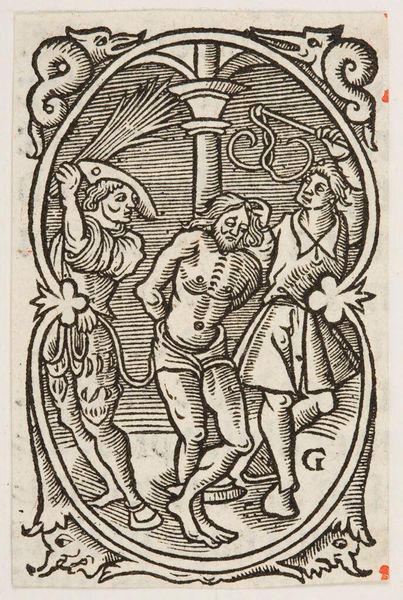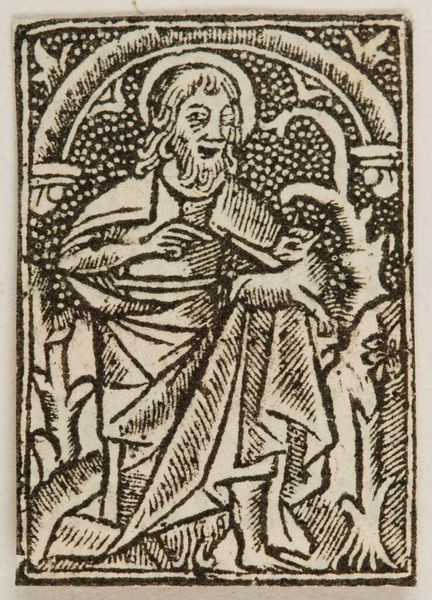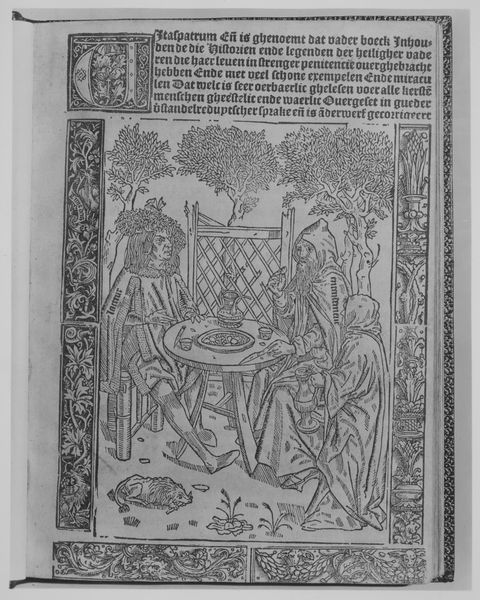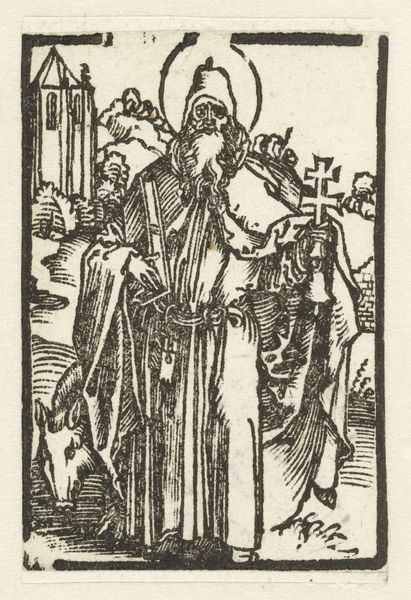
drawing, print, woodcut, engraving
#
drawing
#
medieval
#
narrative-art
# print
#
book
#
flower
#
crosshatching
#
figuration
#
ink line art
#
cross
#
pen-ink sketch
#
woodcut
#
line
#
history-painting
#
engraving
Dimensions: 5 x 4 in. (12.7 x 10.2 cm)
Copyright: Public Domain
Editor: So this woodcut, *Ghetidenboec*, was created sometime between 1494 and 1498 by Adriaen van Liesvelt. The starkness of the lines creates a very dramatic, almost theatrical mood. What kind of statement do you think the artist was trying to make? Curator: Well, consider the era. The late 15th century was a time of profound social upheaval and anxiety. Death, quite literally, was everywhere. This image of Death confronting an individual should be interpreted not just as a morbid fascination but as a commentary on the precarity of life and the levelling force of mortality, impacting all social strata. What does the composition itself suggest to you? Editor: The figure of Death looms very large; it looks almost celebratory in comparison to the man being confronted, which seems intentional. Does that contrast have a specific meaning? Curator: Absolutely. This visual contrast is key. Consider who had access to books, to knowledge, to power, at this time. Death is undiscriminating. Van Liesvelt, through his choice of subject, engages with social hierarchies by highlighting their ultimate futility in the face of mortality. Are there details beyond the main figures that contribute to this sense? Editor: The setting in the background appears to be a church. I wonder if this could be implying criticism of religious institutions or those seeking salvation. Curator: Precisely! By placing this encounter within a religious context, the artist implicitly critiques the church’s failure to protect individuals from death, further undermining established structures of power. This imagery became widespread during the late medieval period, connecting with wider discussions around religious and social reform. How does understanding this context reshape your view? Editor: It gives the work a critical and somewhat rebellious tone. It feels very relevant even now. Curator: Yes, examining these prints really underscores the connections between artistic expression and historical social issues.
Comments
No comments
Be the first to comment and join the conversation on the ultimate creative platform.













